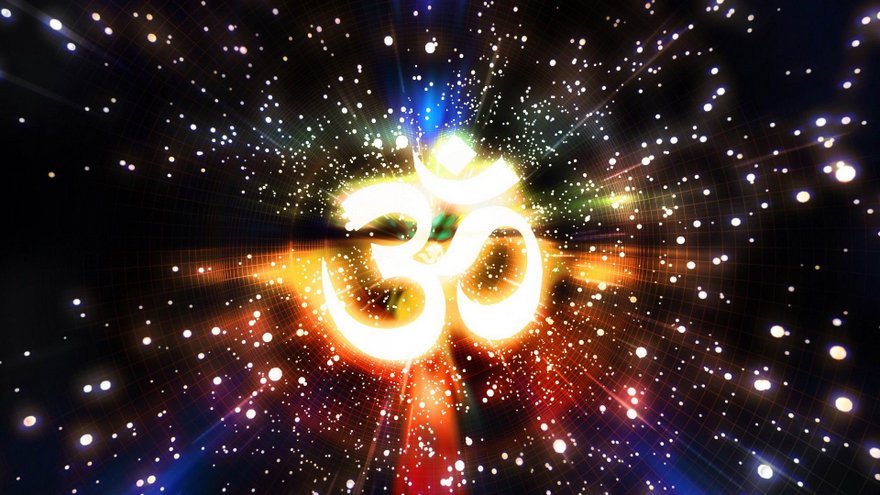What is the meaning of the OM Symbol and its significance? OM is a sacred sound and spiritual icon in Hinduism, Buddhism, and Jainism. It is considered a powerful mantra and is chanted during meditation and other spiritual practices.
The symbol of OM consists of three curves, a semicircle, and a dot. The three curves represent the waking state, the dream state, and the deep sleep state of consciousness. The dot represents the fourth state, the state of transcendence.

OM is believed to be the sound of creation, the first sound that came into existence at the beginning of the universe. According to Hindu mythology, Lord Brahma created the universe by uttering the sound OM. The sound is also associated with the Hindu god Shiva, who is often depicted sitting in meditation with the sound of OM emanating from his body.
OM is a syllable with a deep spiritual significance. It is believed to represent the sound of the universe, the sound that connects all beings and all things. It is considered to be a symbol of the ultimate reality, the absolute truth, and the source of all existence.
Chanting OM is a common practice in yoga and meditation. It is believed to help calm the mind, reduce stress and anxiety, and improve concentration. Chanting OM is also said to help activate the chakras, the energy centers in the body, and balance the flow of energy.
The practice of chanting OM has been found to have numerous health benefits. It has been shown to reduce stress and anxiety, lower blood pressure, and improve heart rate variability. Chanting OM has also been found to have a positive effect on the immune system, reducing inflammation and promoting healing.
OM is also used in music therapy and sound healing. The sound of OM is believed to have a healing effect on the body and mind, promoting relaxation and reducing stress. It is often used in meditation and mindfulness practices to help bring the mind into a state of deep relaxation and inner peace.
In addition to its spiritual and therapeutic benefits, OM is also associated with various scientific concepts. The sound of OM has been found to have a specific frequency of 136.1 Hz, which is known as the frequency of the universe. This frequency is also found in the sound of the sun, the Earth, and other celestial bodies.

OM is also associated with the concept of resonance. Resonance is the phenomenon in which an object vibrates in response to the vibrations of another object with the same frequency. When chanting OM, the body vibrates at the same frequency as the sound, creating a sense of resonance and connection with the universe.
What is OM?
OM is a Sanskrit word made up of three sounds: “A,” “U,” and “M.” These three sounds represent the three states of consciousness in Hinduism: waking, dreaming, and deep sleep. The sound of “A” is said to represent the waking state, “U” the dream state, and “M” the state of deep sleep. The silence that follows OM represents the fourth state of consciousness, also known as turiya or pure consciousness. OM is considered the primordial sound, the sound of creation itself.
The Significance of OM in Hinduism
OM is considered one of the most sacred and powerful sounds in Hinduism. It is believed to have the power to purify the mind, body, and soul, and to connect the individual with the divine. Chanting OM is believed to create positive vibrations in the body and mind, and to help one reach a state of meditation and self-realization. It is also believed to help reduce stress and anxiety, improve concentration, and promote overall well-being.
In Hinduism, OM is often used in mantras and prayers. It is chanted at the beginning and end of many prayers and is also used as a standalone mantra. OM is also often used in yoga practices, where it is chanted during meditation and pranayama (breathing exercises).
The Science of OM
In recent years, OM has been the subject of research in the fields of neuroscience and psychology. Several studies have looked at the effects of chanting OM on the brain and overall well-being. One study published in the International Journal of Yoga found that chanting OM can increase activity in the areas of the brain responsible for attention and emotion regulation, and decrease activity in the areas responsible for mind-wandering and self-referential thinking.
Another study published in the Journal of Ayurveda and Integrative Medicine found that chanting OM can help reduce stress and anxiety and improve overall well-being. The study also found that chanting OM can increase the production of oxytocin, a hormone that promotes social bonding and reduces stress.
FAQs
Chanting OM is believed to have many benefits, including purifying the mind, body, and soul, promoting overall well-being, reducing stress and anxiety, and improving concentration.
Several studies have found that chanting OM can increase activity in the areas of the brain responsible for attention and emotion regulation, and decrease activity in the areas responsible for mind-wandering and self-referential thinking.
The three sounds in OM, “A,” “U,” and “M,” are believed to represent the three states of consciousness in Hinduism: waking, dreaming, and deep sleep. The silence that follows OM represents the fourth state of consciousness, or pure consciousness.
Yes, chanting OM has been found to help reduce stress and anxiety and improve overall well-being.
Yes, several studies have been conducted on the effects of chanting OM on the brain and overall well-being. They can be found on pubmed findings.
OM is considered a sacred sound in Hinduism because it is believed to represent the ultimate reality and consciousness, the sound of the universe, and the three states of consciousness. It is also believed to have the power to purify the mind, body, and soul and connect the individual with the divine.
Conclusion
OM is a sacred sound and symbol in Hinduism, representing the ultimate reality and consciousness, the sound of the universe, and the three states of consciousness. Chanting OM is believed to have many benefits, including purifying the mind, body, and soul, promoting overall well-being, reducing stress and anxiety, and improving concentration. Recent research has found that chanting OM can increase activity in the areas of the brain responsible for attention and emotion regulation and decrease activity in the areas responsible for mind-wandering and self-referential thinking. While the frequency of OM’s use in research is relatively low, the findings suggest that it may have significant benefits for the mind and body.
So next time you practice yoga or meditation or simply feel the need to reduce stress and improve your well-being, consider incorporating chanting OM into your practice. The primordial sound of creation may just be the key to a more peaceful and centered life.





